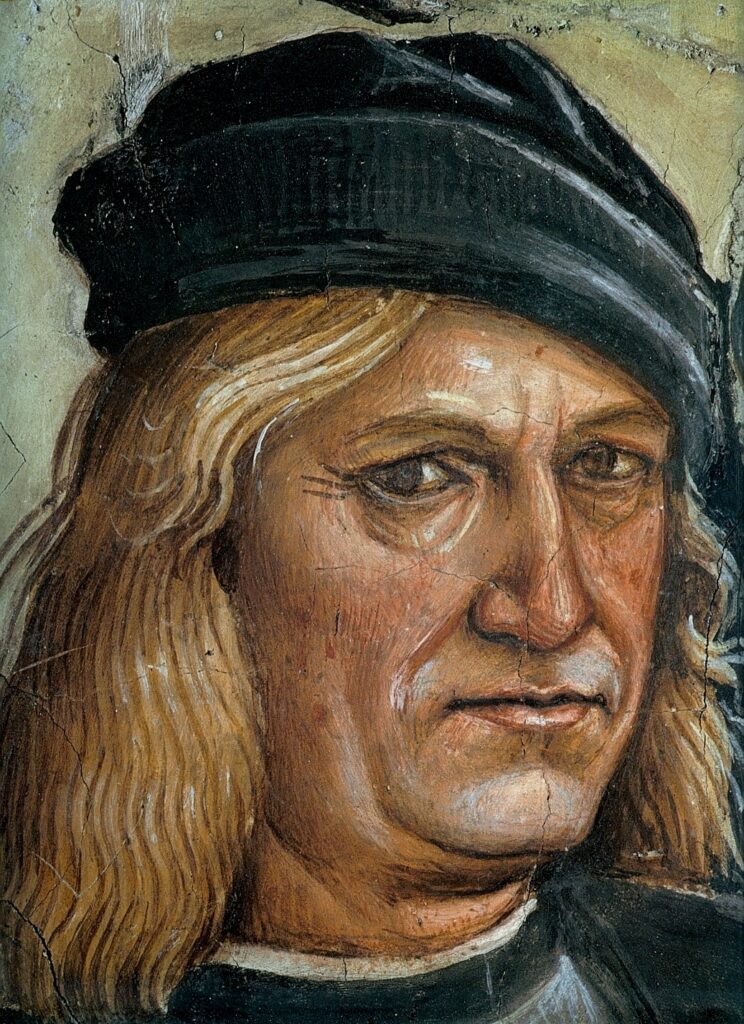Luca Signorelli
«Luca Signorelli's art, more than any other expression of art of the fifteenth century, embodies Dante's spirit, in its energy of multifaceted forms, in the pathos that oozes from his great compositions, in the play of light, in its silent movement»
(Adolfo Venturi)


Luca d’Egidio di Ventura, known as Signorelli (Cortona 1450-1523), was a disciple of Piero della Francesca, who expressed the use of perspective in an excellent way. Despite Piero’s persistent echoes, he developed a need for harmony between plastic and motion that coincides with contemporary Florentine research. In doing so he put himself in line with the painting techniques of the second half of the 15th century, especially those of Palladio and Sandro Botticelli. In his great interest in reconstructing anatomical subjects he can only be compared to Michelangelo Buonarroti.
He met Andrea del Verrocchio, he also collaborated with il Perugino and with Bartolomeo della Gatta in the “Consignment of the Keys” of the Sistine Chapel; but his great fame is undoubtedly linked to the cycle of frescoes in the New Chapel of the Cathedral of Orvieto. Michelangelo himself liked this work so much that, it is said, he probably drew inspiration from it for the frescoes in the Sistine Chapel. His style is very original; the composition is tight, the colour darkens in order to exalt the natural form and the light falls on the characters defining their volume and enhancing their pathetic tone.
He spent the last years of his life between the Marches, Tuscany and the in the Umbrian alto-Tevere, assisted by his colleagues. Most beautiful are his drawings preserved in the Uffizi Cabinet, the Louvre and the British Museum in London.
They said about him: “Luca Signorelli himself finished the chapel that Fra Giovanni da Fiesole had begun: here he represented all the stories of the end of the world, with bizarre and extravagant invention… imagining the terror that will be on that extremely terrifying day” (Giorgio Vasari ). “Signorelli knows how to express such horrors and delights as a means to rise into ecstasy” (Leonardo da Vinci).
He met Andrea del Verrocchio, he also collaborated with il Perugino and with Bartolomeo della Gatta in the “Consignment of the Keys” of the Sistine Chapel; but his great fame is undoubtedly linked to the cycle of frescoes in the New Chapel of the Cathedral of Orvieto. Michelangelo himself liked this work so much that, it is said, he probably drew inspiration from it for the frescoes in the Sistine Chapel. His style is very original; the composition is tight, the colour darkens in order to exalt the natural form and the light falls on the characters defining their volume and enhancing their pathetic tone.
He spent the last years of his life between the Marches, Tuscany and the in the Umbrian alto-Tevere, assisted by his colleagues. Most beautiful are his drawings preserved in the Uffizi Cabinet, the Louvre and the British Museum in London.
They said about him: “Luca Signorelli himself finished the chapel that Fra Giovanni da Fiesole had begun: here he represented all the stories of the end of the world, with bizarre and extravagant invention… imagining the terror that will be on that extremely terrifying day” (Giorgio Vasari ). “Signorelli knows how to express such horrors and delights as a means to rise into ecstasy” (Leonardo da Vinci).
